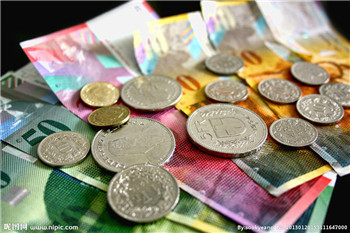
Riding out currency swings is part and parcel of international business — but even for the more battle-hardened members of Switzerland’s watch industry, the wild gyrations that 2015 brought have been a challenge.
經受住匯率波動是國際商務的家常便飯————但即使是對經歷過大風大浪的瑞士制表商而言,2015年的匯率劇烈波動也是一項挑戰。
The most dramatic was the appreciation of the Swiss franc, which briefly surged 39 per cent against the euro in January after the Swiss National Bank ended its longstanding SFr1.20 cap against the single currency.
最戲劇化的變動是瑞士法郎的升值。今年1月,當瑞士央行宣布放棄長期實行的1歐元兌1.20瑞士法郎的上限后,瑞士法郎兌歐元匯率一度飆升39%。
The Swiss franc is currently around 10 per cent stronger. However, the decline of the euro, rouble, yen and renminbi and the rise of the dollar have also contributed to watchmakers’ headaches.
瑞士法郎目前大約升值10%。然而,歐元、盧布、日元和人民幣的貶值以及美元的升值,也讓制表商頭痛。
“It was really an extreme event to see the Swiss franc move so much, and generally from a currency perspective it has been an extreme year,” says Luca Solca, an analyst at Exane BNP Paribas. “To me, the currency environment, with all the moves we have seen, resembles the beggar-thy-neighbour policies of the 1930s, where everyone was trying to get their currencies to depreciate.”
“瑞士法郎如此劇烈的波動真的是個極端事件,而從匯率視角看,今年整體而言是極端的一年。”法國巴黎銀行證券部(Exane BNP Paribas)分析師盧卡∠爾卡(Luca Solca)表示:“在我看來,我們看到的匯率環境的所有變動,都像是上世紀30年代的‘以鄰為壑’政策,各國都試圖讓本幣貶值。”
Jon Cox, of Kepler Cheuvreux, takes a similar line. “The lifting of the cap came completely out of the blue, and was a huge shock to Swiss watchmakers,” he says.
開普勒盛富(Kepler Cheuvreux)的喬恩柯克斯(Jon Cox)持類似看法。“取消匯率上限完全突如其來,對瑞士制表商造成了巨大沖擊。”他說。
“When the franc went to parity with the euro it put the fear of God into the industry. Swiss watchmakers are used to dealing with the strong franc, but it was the speed of the move that was so difficult.”
“當瑞士法郎逼近和歐元等價的水平時,行業不寒而栗。瑞士制表商習慣于應對強勁的瑞士法郎,但這次造成困難的是匯率變動的速度。”
The currency swings present two big problems for the Swiss watch industry. The first is that the rise of the franc has pushed up watchmakers’ costs, the bulk of which are incurred in Switzerland, in contrast to their earnings, which are in a variety of currencies.
匯率波動給瑞士手表業帶來了兩大難題。第一個難題是瑞士法郎的升值使制表商的成本相對于利潤上升。這些制造商的成本主要在瑞士發生,而利潤則由多種貨幣構成。
The second problem is that the diverging currency movements have opened up gaps between the prices of the same watches in different countries. With some Swiss watches selling for hundreds of thousands of euros, even a small percentage difference in prices can create the chance — and incentive — for customers to arbitrage.
第二個難題是,不同的匯率變動使同款手表在不同國家的價格產生了差距。一些瑞士手表的售價高達數十萬歐元,即使價格只發生微小的百分比變動,客戶也會有機會和動機進行套利。
“If you are buying a SFr100,000 [$100,800] watch, it only needs to be a few per cent cheaper in another country for it to be worth your getting in a plane, flying over and buying it there,” says Mr Solca.
“如果你要購買一塊售價10萬瑞士法郎(合10.08萬美元)的手表,只要這款手表在另一個國家的售價低百分之幾,坐飛機去那個國家購買就是值得的。”索爾卡表示。
Of the two problems, the price differential is easier to deal with.
這兩大難題中,差價的問題更容易解決。
The response among watchmakers has broadly fallen into two categories. The first group — including brands such as Omega, Swatch and Rolex — have put prices up in Europe, but not cut them elsewhere.
制表商的應對大體上可以分成兩種。第一組制表商在歐洲提價,但在別處并不降價,這一組包括歐米茄(Omega)、斯沃琪(Swatch)和勞力士(Rolex)等品牌。
Richard Mille is chief executive of the company that bears his name; it has put up its prices in euros by about 20 per cent. “I did not want a gap to develop between the US and Europe,” he says. “I decided a few years ago that we would make sure our prices were the same everywhere in Swiss franc terms.”
理查德猠勒(Richard Mille)是與他本人同名的手表公司的首席執行官。該公司將旗下產品的歐元價格提高了約20%。“我不希望美國和歐洲之間產生差價。”他說,“幾年前我就決定,我們要確保我們在每個地方的售價以瑞士法郎計算都是一樣的。”
Not all brands have been so aggressive. On average, says René Weber, an analyst at Bank Vontobel in Zurich, brands have put up euro prices by about 8 per cent — not enough, he says, to offset the currency swings. “I think brands that have only changed their prices in euros will need another round of price increases next year.”
不是所有品牌都采取了如此激進的舉措。蘇黎世馮托貝爾銀行(Bank Vontobel)分析師勒內韋伯(René Weber)表示,平均而言,各品牌把歐元價格上調8%左右——這不足于抵消匯率波動。“我認為那些只調整了歐元價格的品牌明年還需要進行一輪價格上調。”
The second group, which includes brands owned by Richemont, the Swiss luxury group, put up prices in Europe by a similar amount, but cut prices elsewhere — particularly in the dollar area — by between 5 and 8 per cent. Cutting prices is not something that watchmakers are keen to do, as it undermines their aim of fostering an image of exclusivity. However, Mr Weber says that this year it makes sense. “The situation has been so extreme, that it is absolutely justified,” he says.
第二組品牌在歐洲進行了類似幅度的提價,但還在別處(尤其是美元地區)進行了降價————幅度在5%到8%之間,這一組包括瑞士奢侈品集團歷峰(Richemont)旗下的品牌。制表商并不情愿降價,因為這會影響他們打造高檔品牌形象的目標。然而,韋伯表示,今年降價的舉措是合乎情理的。“情況如此極端,這是完全有理由的。”他說。
Dealing with the impact of the franc’s surge on their cost base is far harder for Swiss watchmakers. Since one of their key selling points is the fact that their wares are “made in Switzerland”, one obvious response — shifting production to cheaper locations — is not an option.
對瑞士制表商而言,應對瑞士法郎大幅升值對其成本基礎的影響要困難得多。因為它們的主要賣點之一就是“瑞士制造”,所以顯而易見的應對方法————把生產業務轉移到成本更低廉的地方——并不在考慮之列。
Instead, watchmakers are trying to control costs in other ways. Few comment on what they are doing. But Mr Cox says one response has been to adjust the contracts and working hours of staff.
制表商正努力用其他方式來控制成本。很少有制造商公開自己的應對方法。但開普勒盛富的柯克斯表示,其中一項是調整員工的合同和工作時間。
“IWC, for example, has been getting staff to volunteer to work shorter hours. Other companies have people working more for the same pay. Some have switched staff living in Germany and France from Swiss franc to euro contracts,” he says.
“例如,IWC讓員工自愿減少工作時間。其他公司讓員工在薪酬不變的情況下延長工作時間。有些公司把住在德國和法國的員工的瑞士法郎合同轉為歐元合同。”他說。
Hiring has also ground to a halt — and some groups have gone further. Ulysse Nardin, the high-end brand snapped up in 2014 by the French luxury group Kering, confirmed in May that it would cut 26 jobs — or about 8 per cent of its Swiss workforce “to adapt to the needs of the market”.
招聘也陷入了停滯————一些集團則更進一步。在2014年被法國奢侈品集團開云(Kering)收購的高端品牌雅典(Ulysse Nardin)5月份證實,將削減26個職位,即8%的瑞士員工,“以適應市場需要”。
Some groups have cut capital spending where possible. But not everyone sees the situation as a cause for retrenchment.
一些集團盡可能削減了資本支出。但并非每家集團都把當前形勢看作退縮的理由。
Nick Hayek, chief executive of Swatch Group, which owns brands such as Breguet, Omega and Longines, said in an interview with the Swiss economic newspaper Finanz und Wirtschaft that “continuing to invest, even when times are hard” had been “key to our success”. He shrugged off the idea that Swatch should cut its marketing spend to boost margins.
旗下品牌包括寶璣(Breguet)、歐米茄和浪琴(Longines)的斯沃琪集團的首席執行官尼克眠耶克(Nick Hayek)在接受瑞士財經報紙《財經和經濟》(Finanz und Wirtschaft)的采訪時說:“即使境況困難也要繼續投資,”一直是“我們成功的關鍵”。他不認同斯沃琪應該削減營銷支出來提高利潤率的觀點。
The upshot is that 2015 is likely to be a weak year for Swiss watchmakers. Exports in the first nine months are 2 per cent less than in the same period in 2014. If the trend continues, 2015 will be the first year since 2009 that Swiss exports have fallen.
對瑞士制表商來說,2015年很可能是不景氣的一年。前9個月的出口同比降低了2%。如果這種趨勢持續下去,2015年將成為自2009年以來瑞士出口下滑的第一個年份。











